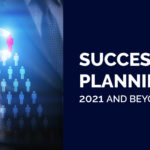Mercer’s 2022 Global Talent Trends Study underscores how winning organisations are tuning into employee needs and values to rethink ways of engaging, developing, and retaining their talents. Our article highlights the significant changes in HR practices post-pandemic, focusing on hybrid work models, advancements in HR technology, separation of critical skills and roles, employee wellbeing, DEI initiatives, and future-proofing the workforce. Embracing these trends is essential for companies to navigate the evolving HR landscape and build a resilient workforce.
Post-Pandemic Trends
The hybrid work model, which surged during the pandemic, is here to stay. A recent Gallup survey found that 55% of employees now prefer a hybrid work arrangement. At the same time:
- A survey conducted by PwC found that 55% of employees would prefer a hybrid model of working post-pandemic.
- A report by McKinsey found that 20-25% of workforces are likely to work remotely between 3-5 days a week post-pandemic.
- A survey conducted by Microsoft found that 70% of employees want flexible remote work options to continue.
- A study by Buffer found that 98% of remote workers would like to work remotely at least some of the time for the rest of their careers.
Balancing remote and in-office work enhances productivity and employee satisfaction. Companies must invest in technology and infrastructure to support seamless collaboration and communication across different work environments.
The pandemic has reset many major work trends. As a result, the way people work has changed and business leaders need to understand this. This prompted HR leaders to rethink workforce and employee planning, management, performance, and experience strategies. Here we explore six HR trends as a result of workforce and workplace changes caused by the pandemic.

Increase in Remote Working
A Gartner poll showed that 48% of employees are likely to work remotely after COVID-19 compared to 30% before the pandemic. Organisations are moving towards supporting remote work. Given this situation, it is critical for managers to understand how their team feels.
- What is going well for them?
- What aspects of independent working can be used to optimise performance?
- How do you ensure employee engagement?
Psychometric tools can be useful in enabling managers to understand their employees’ motivations and obtain clearer insights on how best to work with them. This can provide an opportunity for development and help employees find the tools to keep their morale and productivity levels up.
AI and Technological Advances
HR technology has leaped forward in the last two years. AI-driven recruitment tools, for instance, now use predictive analytics to identify top candidates, slashing hiring times by up to 30%. Advanced analytics for talent management offer deeper insights into employee performance, enabling personalised development plans and better succession planning.
41% of organisations are using AI to boost their HR functions, and this trend is set to rise.
Deloitte
Beyond recruitment and talent management, AI is also transforming other HR functions such as employee engagement and retention.
Chatbots and virtual assistants are being used to handle routine HR inquiries, providing instant support to employees and freeing up HR professionals to focus on more strategic tasks. Machine learning algorithms are also being employed to predict employee turnover, allowing companies to proactively address issues before they lead to resignations.
Moreover, blockchain technology is emerging as a key player in HR, enhancing transparency and security in processes like background checks, credential verification, and payroll management.
Separation of Critical Skills and Roles
Critical roles consist of skills that an organisation needs to meet its business goals. Employers today are learning of another category – critical roles that are essential to the success of essential workflows.
Organisations should focus more on the skills needed to drive their competitive advantage and build the workforce they need post-pandemic. Encourage employees to develop their critical skills and offer career development support to employees who lack such skills. Psychometric assessments can help to identify the following traits of a successful independent worker:
- Reliability – the ability to get work done and deliver the tasks on time without the need to be constantly monitored.
- Independence – the ability to focus and concentrate on the tasks at hand despite working remotely or spending time isolated from colleagues.
- Willingness to learn new skills – the ability to think creatively when challenges arise, learn through experience, and take risks where necessary.
- Discipline – the ability to remain focused on the job and continue to meet deadlines despite working in a busy environment.
Employee Wellbeing
The focus on employee well-being has never been stronger.

79% of employees experience work-related stress, highlighting the need for robust mental health programs.
2023 American Psychological Association survey
In addition to mental health, physical well-being has gained prominence. Employers are offering wellness programs that include fitness memberships, ergonomic workspaces, and health monitoring apps. These initiatives aim to create a holistic approach to employee well-being, addressing both mental and physical health.
Furthermore, flexible work arrangements, such as remote work options and flexible hours, have become key components of well-being strategies. By allowing employees to balance work and personal life better, companies are seeing improvements in job satisfaction and productivity.
Employee well-being is also linked to a sense of purpose and belonging at work. Organisations are fostering a positive culture by encouraging open communication, recognising employee achievements, and promoting a supportive environment.
This holistic approach to well-being is not just a trend but a critical component of modern HR practices aimed at building a resilient and motivated workforce.
Diversity, Equity, and Inclusion (DEI)
Today’s workplace is a web of complexities. Assessing the right talent for the right roles has become the norm. In theory, organisations hope to easily tap into an ideal talent pool and produce top performers. However, in practice, it is a different story.
DEI initiatives are now a cornerstone of HR strategies. Companies are using AI and data analytics to ensure unbiased recruitment and promotion processes, creating a more inclusive workplace.
McKinsey’s 2023 report on diversity found that companies with diverse workforces are 35% more likely to have financial returns above their industry medians. Prioritising DEI enhances innovation, employee engagement, and overall performance.
Future-Proofing the Workforce
Creating a future-proof workforce involves continuous learning and development. Reskilling and upskilling initiatives are essential in adapting to the ever-evolving digital landscape.
50% of all employees will need reskilling by 2025 as technology adoption increases.
World Economic Forum
Implementing robust learning and development programs can boost employee engagement and retention, preparing the workforce for future challenges.
Embracing a Culture of Continuous Learning
Organisations must foster a culture that values and encourages continuous learning. This includes offering accessible, flexible training programs that cater to various learning styles and schedules. Leveraging online platforms and microlearning can make training more manageable and engaging for employees.
Strategic Talent Development
Future-proofing the workforce also means identifying and nurturing high-potential talent. Companies should create clear career paths and development opportunities, ensuring that employees see a future within the organisation. This strategic approach to talent development helps retain top talent and fills leadership pipelines.
Utilizing Technology for Training
Advanced technologies like virtual reality (VR) and augmented reality (AR) are revolutionising employee training. These tools provide immersive learning experiences, allowing employees to practice skills in a safe, controlled environment. Additionally, AI can personalize learning paths based on individual progress and needs, making training more effective.
Collaboration with Educational Institutions
Partnering with educational institutions can help bridge the skills gap. Companies can collaborate with universities and vocational schools to develop curricula that align with industry needs, ensuring that new graduates possess relevant skills. Offering internships and apprenticeships can also provide practical experience and attract fresh talent.
What Does This Mean for You?
As we move into the second quarter of 2024, HR teams must continue to embrace new technologies and trends to stay ahead. By focusing on hybrid work, technological advancements, employee well-being, DEI, regulatory compliance, and future-proofing the workforce, companies can navigate the post-pandemic landscape effectively.
Page Contents






